Did you know you can make a compass out of a needle? It’s a simple experiment and a great way to introduce the concepts of magnetism, magnetic poles, and the Earth’s magnetic field.
Print out detailed instructions and a supplies list below and preview the experiment with our demonstration video. We’ve included everything you need to get started and include a scientific explanation of “why it works” to help your scientists explore the concepts in more detail.
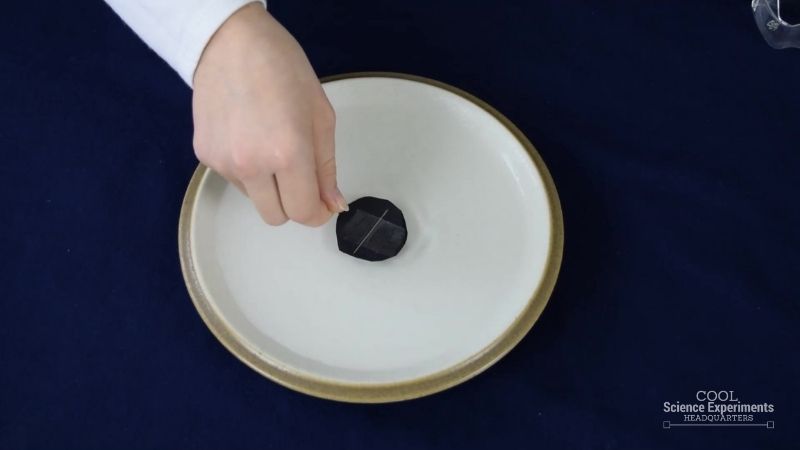
JUMP TO SECTION: Instructions | Video Tutorial | How it Works | Purchase Lab Kit
Supplies Needed
- Sewing Needle
- Magnet
- Sturdy Paper (enough to cut out a circle two inches in diameter)
- Scissors
- Tape
- Water
- Shallow Dish
- Compass (optional, but it’s good to have for comparison)
Make a Needle compass Science Lab Kit – Only $5
Use our easy Make a Needle Compass Science Lab Kit to grab your students’ attention without the stress of planning!
It’s everything you need to make science easy for teachers and fun for students — using inexpensive materials you probably already have in your storage closet!
Floating Needle Compass Science Experiment Instructions
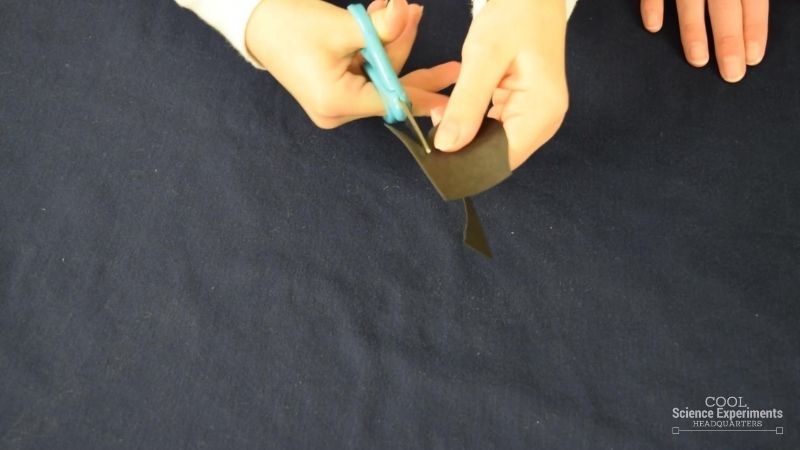
Step 1 – Use scissors to cut a circle out of the piece of paper. The circle should be approximately 2 inches in diameter.
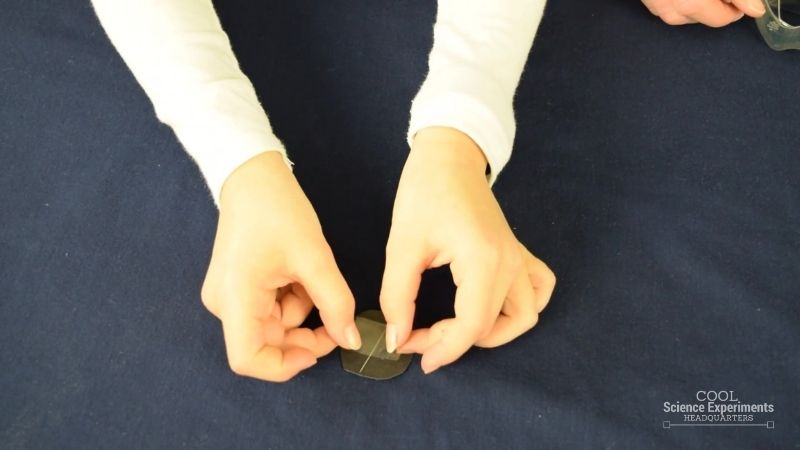
Step 2 – Tape a sewing needle in the middle of the circle.
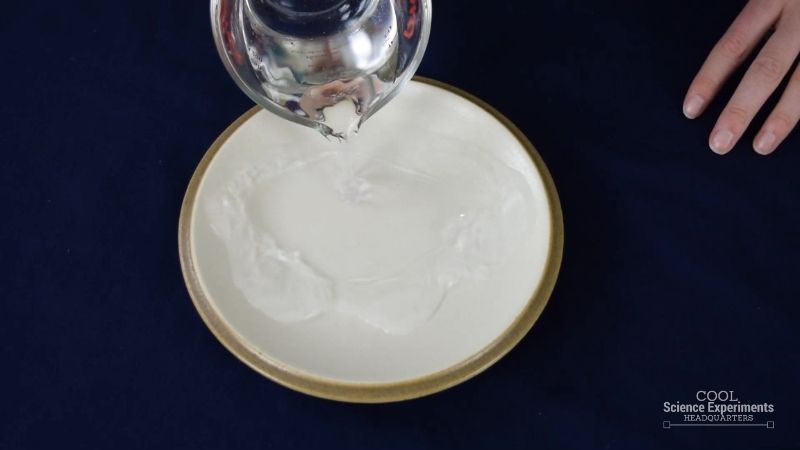
Step 3 – Fill a shallow dish with water.
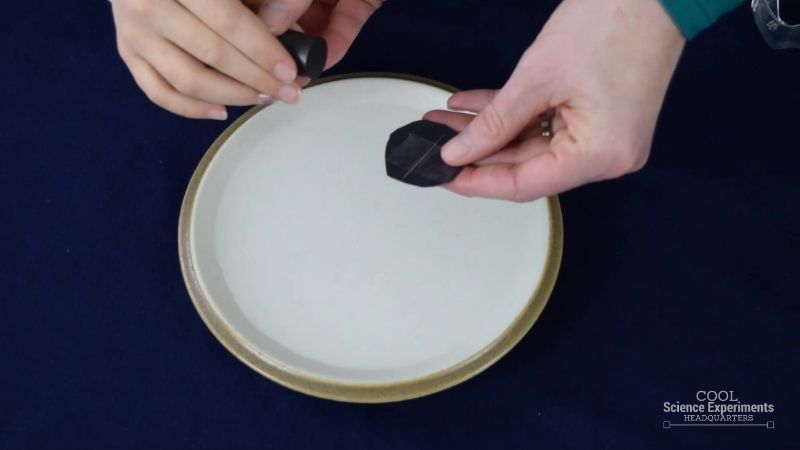
Step 4 – Use a magnet and rub it along the needle in the same direction about 20 times.

Step 5 – Slowly place the piece of paper into the water. It will float along the top.
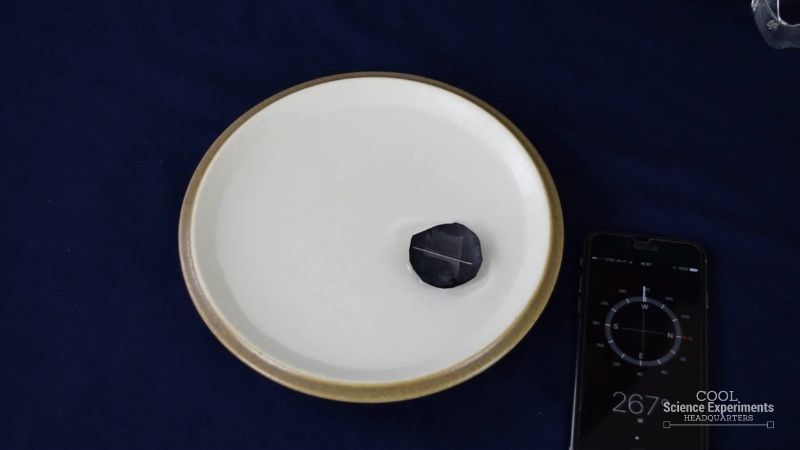
Step 6 – Watch as the circle begins to spin around until the needle is pointing in the direction of north, just like a compass. (Note: Validate the direction by comparing it to an actual compass.)
Do you know the why this worked? Find out the answer in the how does this experiment work section below.
Video Tutorial
Floating Needle Compass Science Experiment Step by Step Instructional Video
How Does the Science Experiment Work
Rubbing the needle with the magnet caused the needle to become temporarily magnetized. Once magnetized, the needle had a north and south pole (like all magnets). Magnets interact with one another by either repelling or attracting each other. Once the needle was magnetized, it interacted with Earth’s magnetic field.
When the paper was placed in the water, it floated on the surface of the water and was able to move freely. At that point, the magnetized needle caused the paper to spin around until the north and south poles of the needle were in line with Earth’s magnetic field – Earth’s north and south poles. The same end of your needle should always point the same direction, despite your best efforts to make it not!
The magnetic field of a magnet is the area of magnetic force around a magnet.
Make a Needle compass Science Lab Kit – Only $5
Use our easy Make a Needle Compass Science Lab Kit to grab your students’ attention without the stress of planning!
It’s everything you need to make science easy for teachers and fun for students — using inexpensive materials you probably already have in your storage closet!
More Science Fun
Magnets can be fun and educational! After doing this experiment, you’ll want to check out these other fun experiments with magnets.
- How liquids impact magnet attraction – Follow this simple experiment to see how the consistency of a liquid impacts magnetic attraction.
- Paper Clip Chain – Use a magnet to make a paper clip chain. How long can you make your chain?
I hope you enjoyed the experiment. Here are some printable instructions:
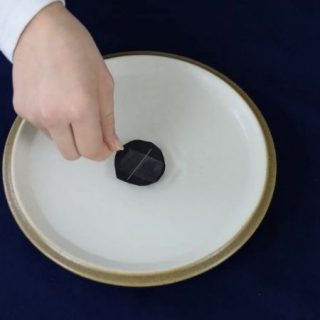
Floating Needle Compass Science Experiment
Materials
- Sewing Needle
- Magnet
- Sturdy Paper (enough to cut out a circle two inches in diameter)
- Scissors
- Tape
- Water
- Shallow Dish
- Compass (optional, but it’s good to have for comparison)
Instructions
- Use scissors to cut a circle out of the piece of paper. The circle should be approximately 2 inches in diameter
- Tape a sewing needle in the middle of the circle.
- Fill a shallow dish with water.
- Use a magnet, and rub it along the needle in the same direction about 20 times.
- Slowly place the piece of paper into the water. It will float along the top.
- Watch as the circle begins to spin around until the needle is pointing in the direction of north, just like a compass. Note: Validate the direction by comparing it to an actual compass

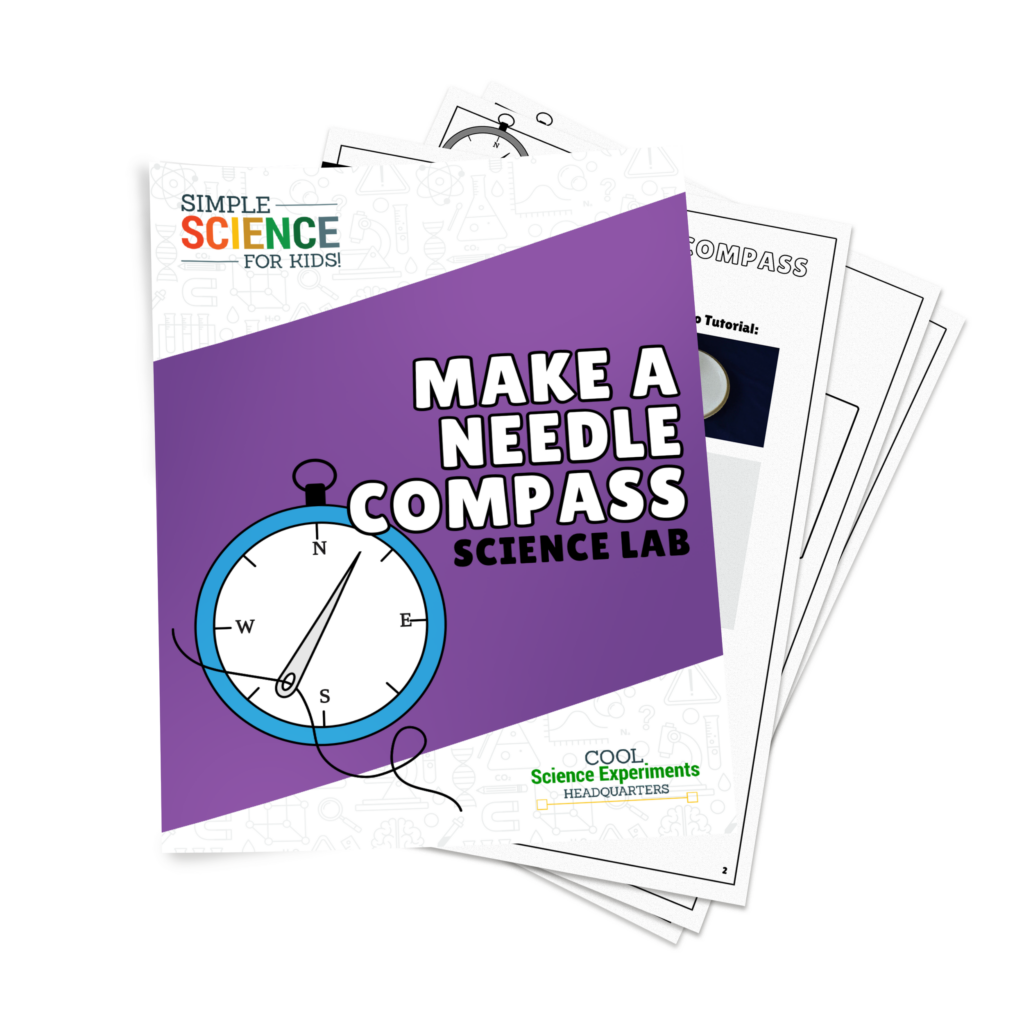

Thanks i learned a lot.
I did this in one of my classes before I retired, but that has been years ago. I wanted to repeat this demonstration, and appreciate your review of the process.